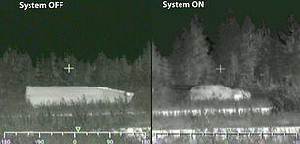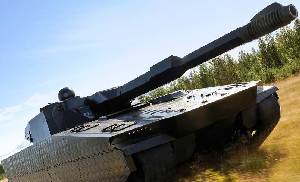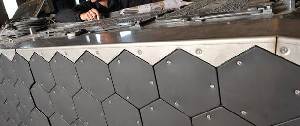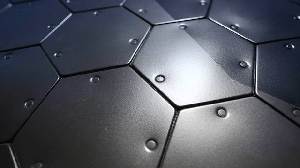| Designation: | Adaptiv |
 |
|---|---|---|
| Manufacturer: | BAE Systems Land Systems Hagglunds AB | |
| Product type: | Protection Systems | |
| Name: | Camouflage |
Imagine making a tank invisible with a cloaking device that is capable of masking the vehicle’s infrared signature to enemy eyes, and the significant advantages this would hold on the battlefield.
It sounds more like a scene from a Harry Potter movie, but BAE Systems is making the reality possible by developing a unique camouflage system called Adaptiv, that allows a vehicle to blend into its surroundings, effectively becoming invisible to hostile thermal imaging systems.
With peacekeeping operations now often taking place in deserts, as well as forests and towns all in the same day, Adaptiv is capable of shielding large pieces of military equipment from detection by allowing vehicles to mimic the temperature of their surroundings to suit varying terrain. It can also make a tank look like other objects, such as a cow or a car, or bushes and rocks.
Adaptiv was developed and patented in Sweden after FMV and the Swedish Defence Materiel Administration commissioned BAE Systems in Örnsköldsvik to produce full-scale technology for land vehicles to avoid detection from thermal sensor systems.
After three years of challenging research, a project team of seven people, with expertise in the fields of problem solving, software, sensors, electronics and design, developed this unique solution.
The high tech camouflage system uses modules, which look like cells in a honeycomb to cover the flanks of an armoured vehicle. The modules are made of elements that can be cooled or heated up very quickly as well as controlled individually, allowing different patterns to be created.
The vehicle essentially works like a chameleon, able to mimic its surroundings, or copy other objects such as trucks and cars that can be projected onto the panels from a detailed image bank. The vehicle is also able to signal peaceful intend through flashing text messages across its flank or by creating patterns that can easily be recognized by friendly forces.
The technology could be ready to be put into production in two years primarily for CV90 family of vehicles and in the future used on maritime and air vehicles, which might help to turn a helicopter into a cloud or a warship into a wave.
The pixels can also be resized to achieve stealth at different ranges. For example, larger objects like buildings or warships might not require close-up stealth and may be fitted with larger panels to display a lower resolution image.
 |
 |
 |
 |
